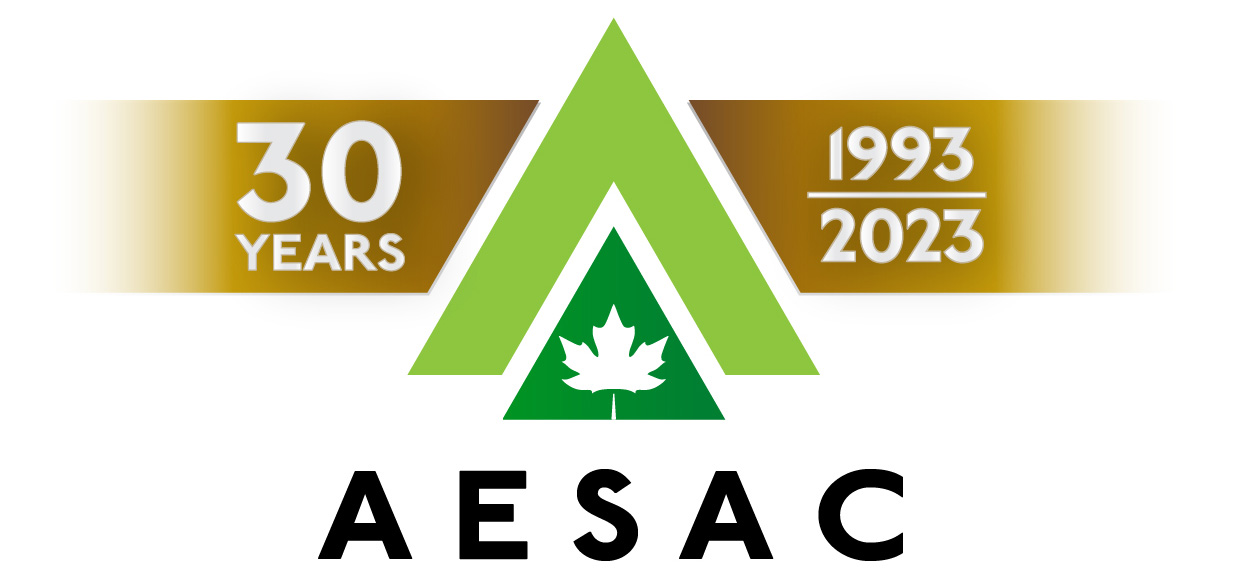- Home
- Training Courses
- Membership
- About Us
- Instructors Blog
- December 2023: All I Want For Christmas
- November 2023: ESA Report Reviews
- October 2023: Can AI Write an ESA Report?
- September 2023: Getting Paid... or Not
- August 2023: Take Me Back...
- July 2023: To Bid or Not To Bid
- June 2023: Selecting a Supplier
- April 2023: Phase 1 Problems, Part 3
- March 2023: Phase 1 Problems, Part 2
- February 2023: Phase 1 Problems, Part 1
- January 2023: Working Outside in Winter
- 2022 Blogs
- 2021 Blogs
- December 2021: Asbestos in your Home
- Sept 2021: Dirty Jars And Other Bad Things… Part 2
- August 2021: Dirty Jars And Other Bad Things… Part 1
- July 2021: How do you want that drawing to look? Part 2
- June 2021: How Did You Want That Drawing To Look? Part 1
- April 2021: So You Need a RSC... Part 2
- March 2021: So You Need a RSC... Part 1
- February 2021: What's In Your Toolbox? Part 2
- January 2021: What's In Your Toolbox? Part 1
- 2020 Blogs
- December 2020: A Day in the Life, Part 2
- November 2020: A Day in the Life, Part 1
- October 2020: Exploring Your Career Path
- September 2020: So You Want To Start Your Own Business - Part 2
- August 2020- So You Want to Start Your Own Business
- June 2020: Effective Communication
- May 2020: Tips For Working From Home
- April 2020: Conducting ESA’s During a Pandemic
- March 2020: It's Not Easy Being Green
- February 2020: Looking Ahead; Bold Predictions for the Next Decade
- January 2020: Looking Back; A Decade in Review
- 2019 Blogs
- 2018 Blogs
- 2017 Blogs
- 2016 Blogs
- 2015 Blogs
- Find an AESAC Member
Menu- Home
- Training Courses
- » Training Courses
- » Webinar Series
- » Calendar of Events
- » Course Registration
- » Course Instructors
- » Testimonials
- Membership
- » Become a Member
- » Certifications
- » Membership Search
- » Update Member Profile
- » Members Only
- » » Member Login
- » » Membership Renewal
- » » Create/Change Password
- » » CESA Certification Application
- About Us
- » About AESAC
- » Course Instructors
- » Contact Us
- Instructors Blog
- » December 2023: All I Want For Christmas
- » November 2023: ESA Report Reviews
- » October 2023: Can AI Write an ESA Report?
- » September 2023: Getting Paid... or Not
- » August 2023: Take Me Back...
- » July 2023: To Bid or Not To Bid
- » June 2023: Selecting a Supplier
- » April 2023: Phase 1 Problems, Part 3
- » March 2023: Phase 1 Problems, Part 2
- » February 2023: Phase 1 Problems, Part 1
- » January 2023: Working Outside in Winter
- » 2022 Blogs
- » » December 2022: Advice To My Younger Self
- » » October 2022: Pre-Purchase Due Diligence
- » » Sept 2022: Words Matter
- » » July 2022: Let Us Come To You
- » » April 2022: Due Diligence
- » » March 2022: Time Management
- » » February 2022: Spinning Augers... Part 2
- » » January 2022: Spinning Augers... Part 1
- » 2021 Blogs
- » » December 2021: Asbestos in your Home
- » » Sept 2021: Dirty Jars And Other Bad Things… Part 2
- » » August 2021: Dirty Jars And Other Bad Things… Part 1
- » » July 2021: How do you want that drawing to look? Part 2
- » » June 2021: How Did You Want That Drawing To Look? Part 1
- » » April 2021: So You Need a RSC... Part 2
- » » March 2021: So You Need a RSC... Part 1
- » » February 2021: What's In Your Toolbox? Part 2
- » » January 2021: What's In Your Toolbox? Part 1
- » 2020 Blogs
- » » December 2020: A Day in the Life, Part 2
- » » November 2020: A Day in the Life, Part 1
- » » October 2020: Exploring Your Career Path
- » » September 2020: So You Want To Start Your Own Business - Part 2
- » » August 2020- So You Want to Start Your Own Business
- » » June 2020: Effective Communication
- » » May 2020: Tips For Working From Home
- » » April 2020: Conducting ESA’s During a Pandemic
- » » March 2020: It's Not Easy Being Green
- » » February 2020: Looking Ahead; Bold Predictions for the Next Decade
- » » January 2020: Looking Back; A Decade in Review
- » 2019 Blogs
- » » November 2019
- » » September 2019
- » » August 2019
- » » July 2019
- » » May 2019
- » » March 2019
- » » February 2019
- » » January 2019
- » 2018 Blogs
- » » November 2018
- » » October 2018
- » » September 2018
- » » August 2018
- » » July 2018
- » » June 2018
- » » May 2018
- » » March 2018
- » » February 2018
- » » January 2018
- » 2017 Blogs
- » » April 2017
- » » June 2017
- » » August 2017
- » » September 2017
- » » December 2017
- » 2016 Blogs
- » » October 2016
- » » September 2016
- » » August 2016
- » » July 2016
- » » June 2016
- » » March 2016
- » » January 2016
- » » December 2016
- » » November 2016
- » 2015 Blogs
- » » April 2015
- » » July 2015
- » » September 2015
- » » October 2015
- » » December 2015
- Find an AESAC Member
Time is money, and money means profit - who doesn’t love keeping hard earned cash in their pocket? Alberta’s upstream oil and gas industry is the same, they work hard for every dollar they make, so they must make each dollar count. We in the environmental industry are trusted to put those dollars to good use.
Having worked in the environmental industry for over 17 years, I think it’s pretty evident that, consultants can deem ourselves “money managers” for our clients. We are allocated a certain budget and need to produce something tangible once the budget has been expended. I like to relate it back to buying your first car, you set a budget, then you need to find a car that will be functional, reliable, and fit within the budget. In our case, we are tasked with utilizing the budget in the most effective and efficient way, while still meeting or maintaining environmental regulatory compliance. We are trusted to put those hard-earned dollars to good use and look for opportunities where every nickel is spent wisely.
So, what does due diligence have to do with cost savings and budgets? Well, I like to think it starts at the beginning. Using the upstream oil and gas industry as an example, more specifically an abandoned wellsite, the first step in progressing the Site to closure is to complete a Phase 1 Environmental Site Assessment (ESA). The purpose of a Phase 1 ESA is to determine the potential for environmental concern based on the historical and/or current Site activities. The basics of a Phase 1 ESA include:
- Desktop file review of client and regulatory files
- Aerial photograph review (historical and current)
- Operator and/or landowner interviews
- Site reconnaissance
- ReportingGenerally, these are completed at a relatively low cost to client, they have a quick turnaround time, and give a really good idea of what the overall potential environmental liability Company X may have – I’ll save that topic for another day.
The key to a successful Phase 1 ESA, is the ability to track down historical information for the Site. Digging into client and regulatory files is necessary to ensure that we are not missing pertinent information that may be the difference between a Site passing or failing. In essence, we want to ensure that we have done our due diligence in finding records, that may prove the Site does not pose environmental risk, therefore eliminating the need for step 2 – Phase II ESA (intrusive investigation). Sometimes digging into those files takes a little more time, especially if they have been buried in the basement room at the end of the long dark hallway (speaking from experience here).
Remembering that time equals money, when necessary, we can take that extra little bit of time (money) to venture down the hallway to find the records that proves the Site does not pose environmental risk. Then when we balance our budgets at the end of the day, we can show that the extra little bit of money (time) that was spent has resulted in a significant cost savings to the client, because we can skip step 2.
Due diligence can equal cost savings, leaving those hard-earned dollars in the pocket.

Jennifer Fletcher, B.Sc., P.Ag.
Jennifer is the Upstream Oil & Gas Course Instructor and Developer for AESAC Inc. and the Lead of Reclamation & Remediation–Environmental Operations at H3M Environmental.
You can contact Jennifer at jfletcher@h3menviro.com
Training Courses
Membership
About Us
Contact UsCopyright (c) 2024 Associated Environmental Site Assessors of Canada; AESAC Inc.



